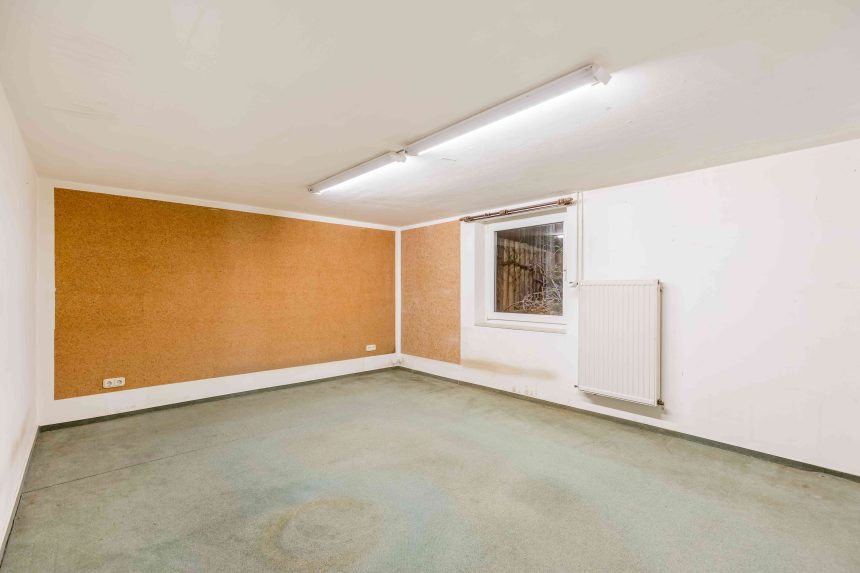Keeping a basement warm in the winter can be challenging, especially if it’s drafty or lacks insulation. However, there are a few key changes you can make that will make it easier to warm up your basement, potentially improving the comfort of your entire home.
Below, we’ve explained how to warm up your basement in winter and spoken to a couple of HVAC experts about their best tips for getting the job done.
Meet the Expert
- John Jordan is the president of Integrity Heating & Cooling Inc.
- Josh Mitchell is an HVAC technician and founder of AirConditionerLab.
Seal Drafts and Air Leaks
Basements are often the forgotten rooms of the house. Cracks, missing weatherstripping, stuck vents, dated windows and doors, and other draft-causing problems go unnoticed and unaddressed.
These air leaks lead to your warm air constantly leaving your basement, increasing your utility bill and making it difficult to keep the space warm and comfortable. Before you can effectively heat your basement, you’ll have to locate the source of the drafts and remedy the problem.
“First, inspect your basement for air leaks around windows, doors, and wall penetrations. Then, use weatherstripping, caulk, or spray foam to seal these gaps,” Josh Mitchell, HVAC technician and founder of AirConditionerLab.
Want more home reno project tips and inspiration? Sign up for our free daily newsletter for the latest how-tos, reno guides, and more!
Add Insulation
Sure, you can sometimes heat an uninsulated basement, but you’ll waste money doing so. And, in colder climates, you may never get the space as warm as you want. To hold the heat in, you must insulate the space.
“Insulating walls and floors with fiberglass batts or foam boards can keep warm air inside. In my experience, properly sealing and insulating a basement can improve heating efficiency by around 20%,” Mitchell explains.
Choose Low-Heat Solutions
If you don’t spend considerable time in your basement, you may not be interested in heating it enough to make it comfortable. In this scenario, a low-heat solution may be effective, especially when paired with insulation.
“If you just need to keep the basement warm enough to protect pipes and stored items and prevent high humidity, you don’t need anything too powerful,” John Jordan, president at Integrity Heating & Cooling Inc, says.
He recommends using low-wattage baseboard heaters or thermostat-controlled space heaters.
Supplement Your Furnace With a Space Heater
If you do spend considerable time in your basement, you may want to consider upgrading your furnace system. A quicker, cheaper solution is to supplement the furnace with a space heater whenever you’re spending time in the basement.
Mitchell explains how space heaters can easily be switched off when not in use, helping you keep energy costs down and lower your central heating setting while keeping a room warm.
Jordan recommends investing in a more effective heat source if you utilize your basement frequently, such as a small pellet stove or a ventless gas heater. These options will heat the space more effectively and cost less in the long run.
Upgrade Windows and Doors
No matter how much effort you put toward insulating and cutting down the draftiness of your basement, failing to upgrade inefficient windows and doors can keep your basement from being as warm as you want.
We get it—not everyone has the budget to upgrade their windows and doors. Luckily, there are some ways you can improve your inefficient windows on a tighter budget. Mitchell recommends using insulating film to winterize windows and installing heavy-duty door sweeps.
A DIY window insulation kit may increase your basement’s warmth by about 10-15%, which can make a noticeable difference without the cost of window replacement, Mitchell says.
Improve Air Circulation
It may seem counterintuitive, but increasing the air circulation in your basement may be the key to keeping it warm. Simply running a fan may be all it takes to warm up your basement.
“A ceiling or oscillating fan on a low setting can gently push warm air downward, ensuring that the entire space stays comfortable,” Mitchell says. “This method helps prevent cold pockets and maximizes the warmth from your heating system.”








